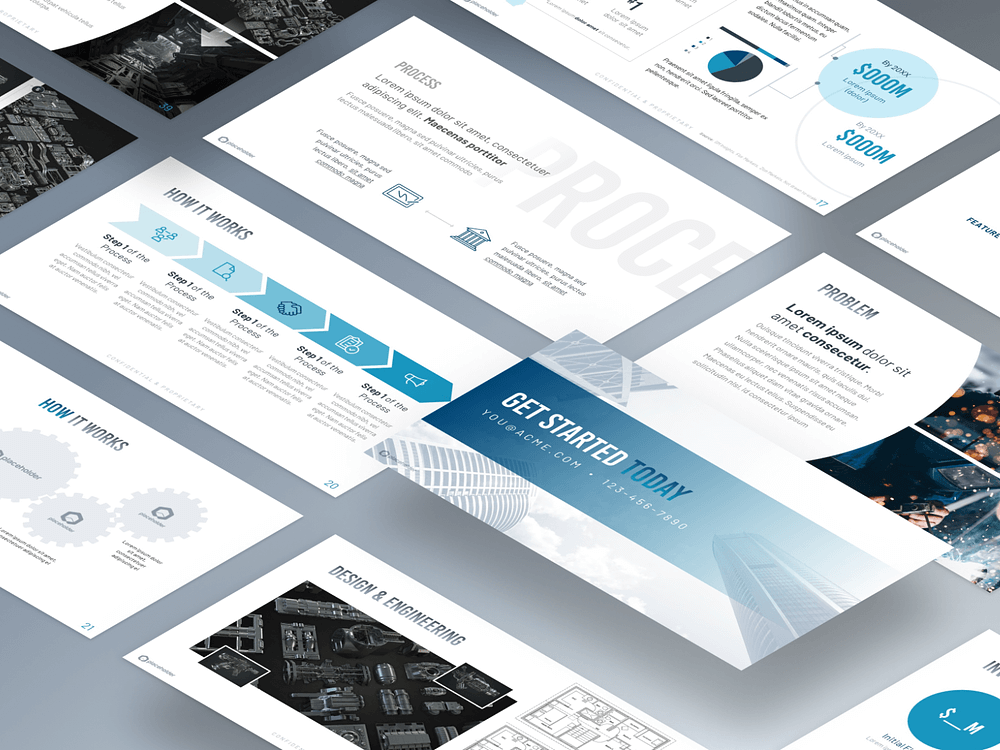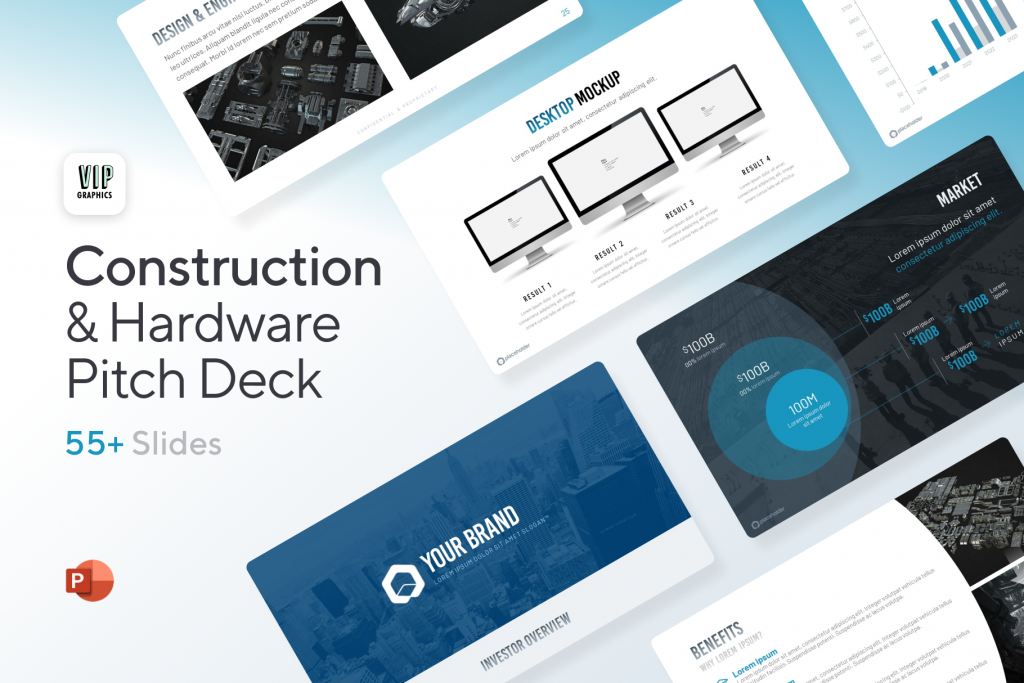With the rise of Industry 4.0, hardware and robotics startups are experiencing rapid growth and transforming several industries with their developments. A recent study by Global Data predicts that the global robotics market could reach $218 billion by 2030. Despite this promising financial outlook, startup founders from this industry often struggle to get investments. Making hardware is expensive, and getting into the market is tricky.
This article aims to offer valuable advice and actionable tips to help founders overcome these obstacles and successfully raise capital for their hardware or robotics startups.
What is a hardware pitch deck? What is its purpose?
Robotics and hardware startups usually require significant upfront investment and spend years in stealth, developing and validating prototypes before going to market. Much like biotech and other “hard tech” startups, these companies will usually raise well over Seeight figures in venture funding before earning their first revenue.
Grant funding is limited and insufficient to go-to-market, so external investment is a must for hardware startups. That’s why a killer pitch deck is such an important tool for hardware and robotics founders.
What slides should be in your hardware / robotics startup’s pitch deck?
These slides are what you will typically see in a hardware/robotics startup’s pitch deck:
Cover Slide:
This slide will define the tone of your hardware/robotics startup pitch deck, so it should have a clear, catchy title. Use visuals like product images or graphics to make it appealing. You can also include contact info if needed. This slide is the first thing investors see, so make sure it grabs their attention and sticks in their minds.
Problem Slide:
In this slide, pinpoint the key issue your innovation addresses with clear, impactful, and fact-based data. Emphasizes the problem’s significance by showcasing its financial, environmental, and societal costs. You should also examine existing solutions and highlight why your approach stands out. Use simple visuals like graphs to drive home the problem’s scale. This slide is vital for showing investors why your solution is necessary and relevant.
Solution Slide:
The Solution slide is where you highlight your hardware/robotics innovation. Here, you present your technology and explain how it solves the identified problem. Use visuals to demonstrate unique features and benefits like efficiency, performance, or cost-effectiveness.
How it Works Slide:
On this slide, illustrate the mechanics of your hardware/robotics solution. Use clear visuals like infographics and flowcharts to show the process, avoiding technical jargon or complex diagrams.
Explain how your hardware/robotics solution moves from problem to solution and simplifyconcepts for easy understanding. This slide clarifies the functionality of your innovation, ensuring clarity for the audience.
Competitive Advantage/Differentiation Slide:
This slide should highlight the unique advantages and superior features of your hardware/robotics solution compared to existing alternatives in the market. Anticipate questions and concerns about competition, and explain why customers will prefer your product.
Market / Opportunity Slide:
This slide focuses on the market size and growth relevant to your hardware/robotics startup’s target audience. Avoid broad generalizations and concentrate on specifics directly related to your product or service. Instead of discussing the entire hardware/robotics market, pinpoint the specific niche you cater to.
It’s essential to back your statements with reliable sources while showing how you plan to capitalize on this evolving landscape.
Target Market Slide:
Identify specific industries and user needs. Use the target market slide to detail use cases and demographics. Tailor your solutions for various sectors, whether it’s manufacturing automation or healthcare robotics, to showcase your understanding of industry-specific challenges.
Highlight how your product meets different users’ needs, such as improving efficiency, enhancing safety, or reducing costs. This not only enhances market appeal but also helps investors envision your solution’s versatility across industries and user groups.
Traction Slide:
The Traction slide in a hardware/robotics startup pitch deck validates progress and market acceptance. It showcases successful product implementations, patented inventions, client acquisitions, and media attention. This slide should include specific metrics, case studies, unique innovations, and any awards. A strong Traction slide enhances credibility and demonstrates the startup’s expertise and innovation in the hardware/robotics industry.
Business Model Slide:
For hardware/robotics startups, it’s important to show how revenue comes in, what prices are set, and how customers are brought on board. This slide helps investors understand how the business will stay profitable in the hardware/robotics market.
Team Slide:
Introduce your leadership team and their relevant experiences and strengths that contribute to your hardware/robotics startup’s success. Provide a brief overview of key roles and expertise. Show how your team’s mix of strategic vision, technical know-how, and industry-specific knowledge is tailored to the hardware/robotics field.
The goal is to give investors a clear understanding of how your team’s collective skills position the hardware/robotics startup for success in this specialized market.
Investment Slide:
Explain how the investment will be used for technology development, hiring, research, and market expansion. Break down the allocation of funds to show how it will enhance products and drive market growth. This slide builds investor confidence by presenting a clear plan for fund utilization and outlining the startup’s goals in the hardware/robotics industry.
Roadmap Slide:
The Roadmap slide lays out your startup’s milestones and future plans for development and expansion in the hardware/robotics industry. Highlight planned advancements in technology, research goals, and key milestones for product development and release. Use the slide to show how your startup will adapt to emerging trends and integrate new technologies like AI or blockchain into your hardware/robotics solutions.
Vision Slide:
The Vision slide explains your product or company’s long-term goals and how it plans to grow and improve safety. For hardware/robotics startups, it outlines the aim to enhance technology, safety measures, and potentially set new industry standards.
Call-to-Action Slide:
Wrap up your pitch with a compelling call-to-action, prompting investors to take the next step. This could involve scheduling a follow-up meeting, exploring partnership opportunities, or making an investment in the venture.
Tips for designing a winning hardware/robotics pitch deck:
- Prioritize Trends: Focus on current industry trends to showcase why your solution is relevant and needed, instead of just talking about market size.
- Highlight Unique Features: Showcase what makes your product different from existing solutions in the market. Whether it’s a novel technology, unique functionality, or superior performance, make it clear why your product stands out.
- Keep it Clear and Short: Make sure your pitch is easy to understand and brief. A straightforward narrative that aligns with investor interests can help secure funding and support your business growth in the cybersecurity sector.
Need help with your hardware/robotics startup pitch deck?
Captivate investors and secure investments for your hardware/robotics startup with the Hardware Pitch Deck Template by VIP Graphics. This template can aid you in producing engaging slides that highlight the potential of your hardware/robotics startup — explore it here.

